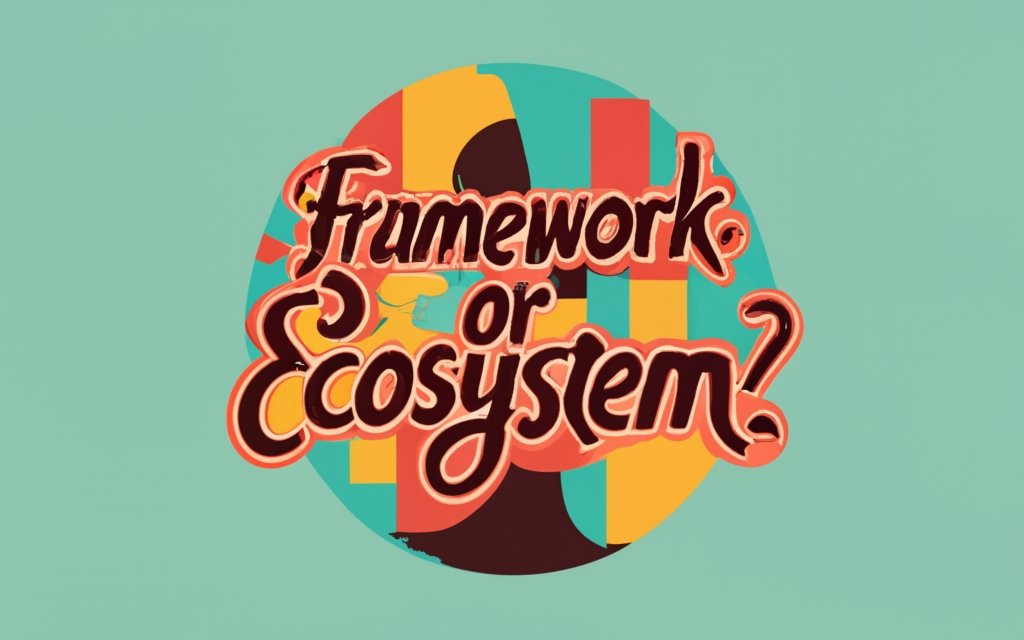Is Enterprise Agility a Framework? There is often confusion around whether Enterprise Agility is a framework like Scrum or SAFe, or a broader ecosystem.

Traditional agile frameworks like Scrum and SAFe, which focus primarily on software development, product strategy, iterative delivery, and incremental customer value, provide important but limited capabilities in times of accelerated change.
To thrive in today's rapidly changing business environment, organizations need to cultivate flexibility at an enterprise level. This requires adopting a holistic strategic approach that extends beyond product or software departments. Enterprise-level agility enables improved evolution across the entire organization and more effective alignment with external stakeholders such as partners, suppliers, and communities.
It empowers companies to sense and respond to market changes, leverage emerging opportunities, and sustain resilience in the face of uncertainty. While traditional agile principles remain relevant, enterprises now need to evolve beyond tactical iterative delivery. By embracing adaptive strategies that connect all parts of the business, companies can build comprehensive agility and innovation across their entire ecosystem.
Let's examine some key differences between traditional agile frameworks and the Enterprise Agility ecosystem:
Focus Area
Frameworks like Scrum and SAFe are focused on software development teams, products, and the delivery process. They aim to provide through practices such as short sprints, continuous integration, etc. Introduce flexibility and change in the way mainly software products are developed. In contrast, Enterprise Agility considers the whole organization including leadership, strategy, customers, partners, society, and the accelerated environment. It recognizes that in today's world, the entire enterprise needs to be resilient and responsive, not just product teams. Enterprise Agility takes a broad systemic view of the organization within its business ecosystem.
Purpose
The purpose of frameworks like Scrum and SAFe is to facilitate agility in software or product development. They aim to deliver working software frequently through short iterations, getting feedback, and continuous improvements. Their purpose is limited to introducing agility in product development cycles.
The core purpose of Enterprise Agility is to build resilience and sustained innovation across the entire enterprise in times of exponential change. It aims to develop leadership capabilities, strategic thinking, TriValue stakeholder orientation, and future thinking to constantly adapt and innovate. Enterprise Agility provides a new way of thinking and acting organization-wide.
Approach
Frameworks like Scrum or SAFe prescribe specific roles, events, artifacts and practices. They provide a predefined way of working—daily standups, retrospectives, user stories etc. Their approach is to implement these standardized practices and evolve them. In contrast, Enterprise Agility offers principles, models, tools and ways of thinking first to guide agile behavior. It recognizes that every organization has a unique context. So instead of prescribing standardized practices, Enterprise Agility provides flexible guiding models that can be adapted. The approach is agile rather than prescriptive.
Mindset and Shared Progress
While agile frameworks provide effective tactical practices for product development and customer focus, they often operate within this mindset inherit in their original principles and assumptions. In contrast, Enterprise Agility promotes the Enterprise Agility Way of Thinking (EAWT) that is connected to long-term learning and continually re-examining assumptions, sensing the markets, and principles and practices related to sustainability as the business context evolves or is disrupted.
With EAWT, agility scales beyond short-term assumptions. There is a strategic focus on developing enterprise-wide skills for constant adaptation. Core capabilities such as sensing environmental changes, exploring uncertainty, and rapidly responding to new opportunities become ongoing disciplines. EAWT provides the mental models to accelerate change and sustain resilience even as the competitive landscape transforms.
Additionally, EAWT incorporates the main framework of Shared progress, which optimizes for mutual benefits across customers, company, workforce, and society. It aims to build partnerships and social contracts that enable continuous value creation and innovation through complex changes.
Business Model
Most agile frameworks don't focus on the whole business model and can't deal with business model disruption. Their scope is on product execution and delivery and product disruption, not the enterprise strategy.
A core component of Enterprise Agility is reimagining the business model to balance customer, company and workforce value simultaneously. The TriValue model provides a framework to evolve the business model with changing contexts.
In summary, while agile frameworks provide tactical practices for teams and products, Enterprise Agility offers a flexible, adaptive ecosystem for enterprise-wide agility during accelerated change. It enables a systemic, broad-based approach tailored to the organization's unique situation and the new fast-paced AI reality. Enterprise Agility provides a holistic perspective that extends beyond immediate teams and products to the broader organization, customers, partners, society, and environment.
It also places the focus on sustainability across all areas, preparing for potential business model disruption. Enterprise Agility incorporates assessing and optimizing sustainable impact on society, the planet, and the extended business ecosystem.
With its emphasis on long-term resilience, Enterprise Agility helps build the capabilities to continuously adapt and innovate across the whole enterprise. It cultivates the leadership mindset, strategic orientation, and organizational collective capabilities to thrive in times of accelerating change.
